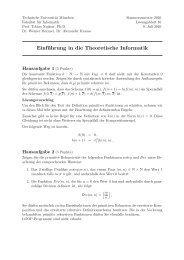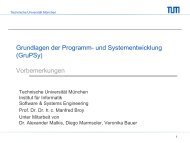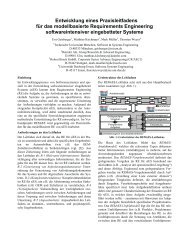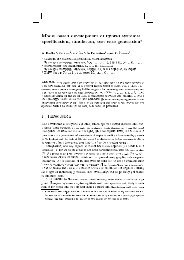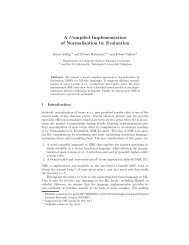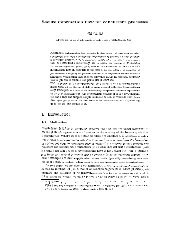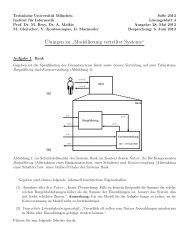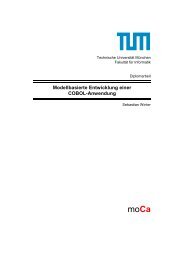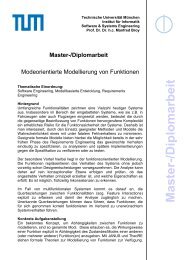CHAOS: A Recipe for Success - Software and Systems Engineering
CHAOS: A Recipe for Success - Software and Systems Engineering
CHAOS: A Recipe for Success - Software and Systems Engineering
Create successful ePaper yourself
Turn your PDF publications into a flip-book with our unique Google optimized e-Paper software.
Portability: Any project manager can attest to lateSunday evenings or “off hours” at home spent updating aproject plan. The tool must be able to run independent ofthe environment.Distribution of Data: Project management tools are amajor source of communication throughout the lifecycleRole of the Internet<strong>and</strong> the Cybernetic WorkerInternet technology changes everything. As a ubiquitouscommunications infrastructure, the Internet enablesenterprise-wide project management <strong>and</strong> the building ofvirtual project teams within a global, collaborative projectmanagement environment.Because the Internet is the only widely available plat<strong>for</strong>m<strong>for</strong> accessing process <strong>and</strong> project in<strong>for</strong>mation, it is a costeffective backbone <strong>for</strong> extending project planning <strong>and</strong>execution to every corporate location using the TCP/IPcommon denominator. A number of project managers aretapping the power of the Internet, corporate Intranets <strong>and</strong>corporate Extranets to provide all stakeholders withinstant access to project plans <strong>and</strong> status reports.However, project management on a global scale will notbe easy. Most project management techniques weredesigned <strong>for</strong> co-located project teams. Those techniquesmay prove ineffective in global, multi-site organizations.of a project to a variety of audiences. The tool mustcontain features/functions to support their differingcommunication requirements, from the high levelexecutive view to the more detailed level required by aproject manager. This can be accomplished throughreport facilities, online queries, Web access, e-mailnotification, <strong>and</strong>/or integration <strong>and</strong> interoperability withother tools providing these functions.Integrity: Project management tools must maintain theintegrity of the data/plan input into the tool. In essence,a project management tool is just a productivity aid.It does not “manage” a project or ensure its success; itsimply assists the project manager in planning <strong>and</strong>executing a project. The project plan, as the primaryoutput of a project management tool, is the bible of theproject. A project manager must be confident that thetool will not alter the content of a project plan.Rapid Response Time: Project management tools mustaccommodate resource movements, task/activityadditions, expansions or deletions, constant schedulechanges occurring throughout the lifecycle of a project<strong>and</strong> rapidly reflect those changes to all participants,whether they are local or geographically dispersed.The St<strong>and</strong>ish Group anticipates that tool vendors willplace more emphasis on enterprise-wide projectmanagement via Internet enablement, multiple nestedprojects support, <strong>and</strong> enterprise-wide collaborationfeatures. Interoperability will be a primary objective.Globally distributed software development projects mustcontend with different languages, cultures, time zones,work ethics, legal systems, <strong>and</strong> hardware <strong>and</strong> softwarerequirements. The development of large softwaresystems will require larger teams of people with differentknowledge <strong>and</strong> educational backgrounds to work togetherat multiple locations. This fact of life must somehow beweighed against <strong>CHAOS</strong> findings that project size <strong>and</strong>scope creep threaten project success.Coordinating <strong>and</strong> managing the work of geographicallydistributed high per<strong>for</strong>mance virtual project teams,providing global access to project plans <strong>and</strong> dynamicproject data, <strong>and</strong> internalizing the experience of pastprojects to make it usable <strong>for</strong> future projects arechallenges to be addressed.Despite the hurdles, The St<strong>and</strong>ish Group’s research foundthat project management is one process cited by CIOs asmost adaptable to virtual environments. CIOs underst<strong>and</strong>that managing a virtual project work<strong>for</strong>ce is nottechnology dependent. From e-mail to cell phones <strong>and</strong>pagers, communications abound. Again, people <strong>and</strong>processes are at the heart of project management, nottools<strong>and</strong> technology.<strong>CHAOS</strong> University ® participants engaged in building orsupporting virtual enterprises reported that the top threecyberworker issues are measuring productivity, managingcommunications <strong>and</strong> motivating isolated workers. Projectsize magnifies these human challenges. Building virtualteams with a minimum of face time, clearly defining work,measuring cybernetic worker productivity <strong>and</strong> managingemployee communications across time zones are majormanagement priorities.COPYRIGHT ©199911THE STANDISH GROUP INTERNATIONAL, INC.



